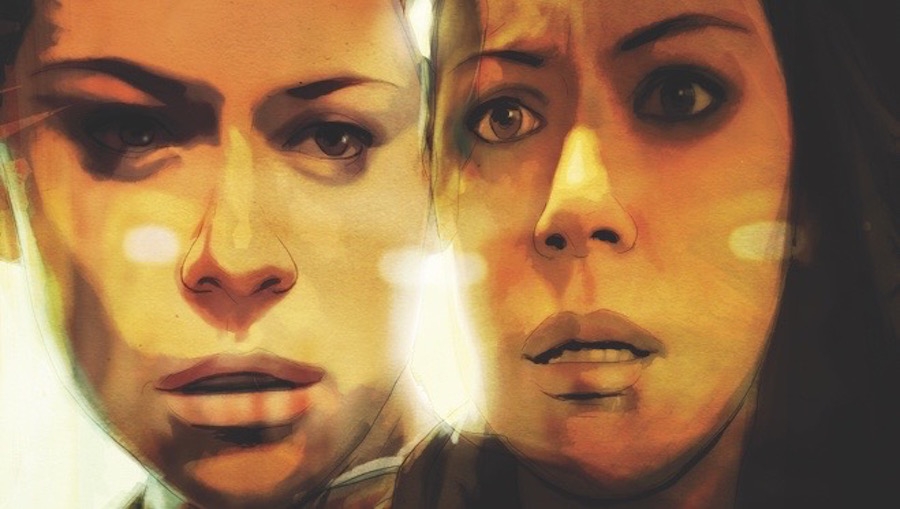Orphan Black: Deviations #1 shows us what would happen if Sarah had saved Beth from committing suicide on the train platform. Despite this major twist in plot, this issue still really feels like the TV show. Heli Kennedy keeps much of the familiar plot in tact. The key players are introduced, and they reference several complications likely to fully develop in upcoming issues. This issue is jam-packed with exciting moments. It brings me back to the early episodes of season 1 of the show. My main question is: How will Beth alter things to come? I can’t imagine that the story proceeds exactly as it did on the show with Beth added into the mix. She is an original member of Clone Club who has lots of resources. She should definitely impact some of the drama yet to unfold. And I also look forward to how Kennedy will imagine the dynamic between Beth and Helena.
It is very refreshing to meet the brilliant cast of characters from the TV show in this first issue. Kennedy perfectly captures the personalized language of the characters—from Sarah’s “yeah?” to Alison’s “Christopher Crutches!” These characters are faithful reflections of their TV selves, which makes it promising that this series will continue to bring us classic moments and quotes. The deviation of Beth allows us to appreciate the eccentricities of another character while the others remain consistent with those that we have grown to love from the show.
In reading this issue, fans of the TV show will recognize some of the show’s greatest and most entertaining moments, such as a Clone Club meeting and Felix painting nude under his apron. And readers who have not seen the show are introduced to the idea of multiple clones running around and the potential complications they must face. They get to discover these characters fresh and find all the quirks that make them so brilliant and likeable.
Wayne Nichols’ art also creates characters that are recognizable from the series. He does a nice job drawing clones who resemble one another but still have slightly different physical qualities. There is something in the way he draws the lips, especially, that reminds us that these women are all clones. Nichols is the Tatiana Maslany of this series—he has to create identical characters who are all recognizably unique. So far, I applaud his skills, and I look forward to seeing Helena, Rachel, and hopefully Krystal.
The variant covers are unique and clever. I especially like Kelly Blake’s 3D papercraft design. I hope that for each issue, she brings a different papercraft character so we can build our own paper version of Clone Club. I also enjoy the “DNA Sequencing” of comic book writing at the end of the issue. This breaks down the artistic process for those who are scientifically minded—or for those of us who just appreciate a creative play on a theme.
Overall, I found this issue to be really engaging. So much happens, but it is not overwhelming. The story leaves us wondering how the overlaps in plot will deviate throughout the series, and it raises anticipation for more crazy, funny, intense, and scary moments between all of these great characters.

